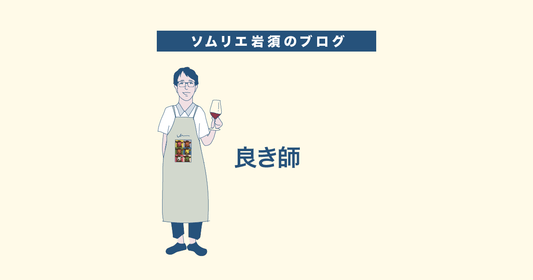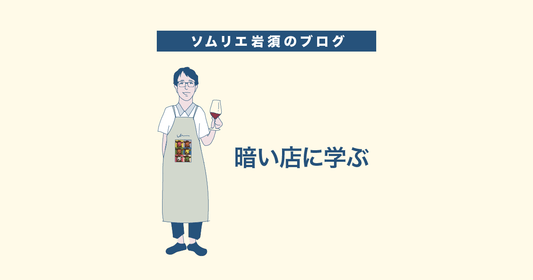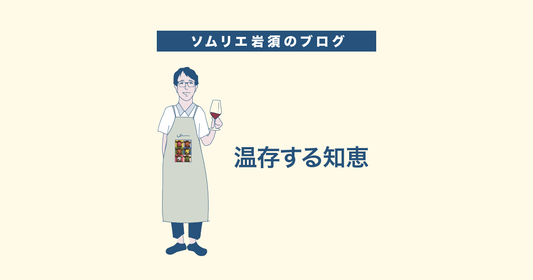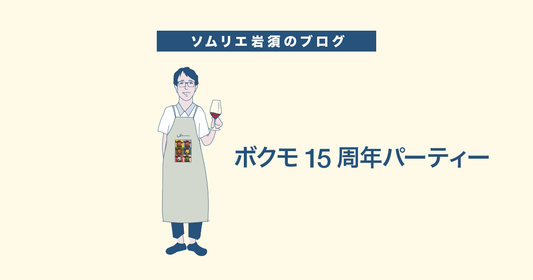
I like rosé wine.
When I go to a wine shop and they sell rosé by the glass, I order it without hesitation. When I go to the nearby Kaldi and find a delicious looking rosé wine, I buy it without hesitation.
And I know that rosé wine is currently a hot genre in the global wine world .
This is because in France, the country with the highest authority in wine, rosé is becoming more and more popular than white, and sales of rosé have surpassed those of white. Red 53%, rosé 30%, white 17% (2018).
This rosé boom in France is spreading around the world, and it is said that rosé wine has firmly established itself as a staple item in the beer-loving countries of the UK and cola-loving countries of the US.
I like rosé wine.
So I think , "French people have similar tastes to me." (laughs)
But, but.
In Japan, there are actually very few restaurants where you can drink rosé by the glass all the time. Even retail stores have no rosé lineup at all (especially in Nagoya where I live).
Why? The reason is simple.
Because it's completely unpopular.
I feel the faint shadow of rosé every day at my store. It doesn't sell at all compared to sparkling wine, white wine, and red wine. My recent experience is that the ratio of sparkling wine to white wine to red wine is about 2:3.5:4:rosé to 0.5.
This won't do.
So I recommend the rosé to them from the counter, almost every day.
As a result, we were able to get our regular customers to enjoy at least one drink.
But then I quickly go back to the white and red I liked originally.
It doesn't catch on. It doesn't become popular. That's the situation with rosé wine in Japan.
I wonder why, even though it's so delicious.
It can be paired with so many different dishes.
Yes, it's excellent when it comes to pairing with food.
Especially dry rosé wine.
・Chinese food ・Ethnic food ・Japanese food ・Vegetable food ・Seafood food ・Light meat food
These generally go well with dry rosé.
Among them, Chinese cuisine is particularly noteworthy.
Chinese food uses a variety of ingredients and cooking methods, and is generally greasy.
Rosé wine has the best of both worlds: the bitterness of red wine and the refreshing taste of white wine. This means it can be paired with a wide range of foods.
Oil also prolongs the aftertaste of the food, so by adding wine to the oily aftertaste, you can fully experience the pairing of the food and wine.
Once you try it, you'll understand.
I often talk about this at the counter...
Unfortunately, we are not a Chinese restaurant.
Even if you talk, you can't try pairing right away.
I often say, "Next time you eat Chinese food at home, try pairing it with rosé," but I've hardly heard of anyone actually doing so.
I guess everyone was drunk and forgot what I said. Too bad.
That's why I continue to fail to make rosé wine popular.
I wonder if there's anything I can do about it.
However, the Japanese wine industry as a whole is not simply sitting idly by as the rosé market suffers.
Rosé is the latest wine in the world. Many people in the wine industry want to spread cool wine in the Japanese wine market.
So, we came up with a campaign to coincide with cherry blossom season.
Since cherry blossom color means pink wine, all the wine companies are running campaigns saying, "Drink rosé in spring." It's true that they do sell a little during that time, but I don't think that's enough.
After all, rosé wine is the "summer drink."
It is said that the rosé boom in France, the UK and the US was due to the successful branding of "rosé = wine to get through the hot summer."
It's easy to drink, but it's a little bitter and stimulates the appetite. Rose wine, with its characteristics, is said to be a necessity in urban summers as global warming progresses.
Therefore, it seems a bit of a waste for Japan to still promote rosé as the "drink of cherry blossom season."
Rather, the business opportunity lies in the summer that follows. I think Japan should follow the example of the rest of the world and market itself in a way that suggests that rosé suits the hot summer.
Further research revealed that the global rosé wine boom is being driven by "millennial girls." In other words, women in their 20s to early 30s are drinking rosé.
Their identity is, naturally, to look good.
In other words, the beautiful pink rosé really stands out. And we who drink rosé really stand out.
This is said to be one of the factors behind the global pandemic.
Ah, that's it.
In other words, people in the Japanese wine industry are not able to effectively approach Instagram influencers.
There are no rosé booths at summer events that millennial girls love.
I think that's what it is.
Many Japanese millennial women are not very tolerant of alcohol and do not drink wine on a regular basis.
So, first of all, we should sell low-alcohol rosé. We should sell cocktails that use rosé. That's how we can raise awareness of rosé.
I just realized that now.
However, winter is just around the corner in Japan. What a shame.
I think I'll do some research on Instagram and light rosé cocktails so that rosé becomes more popular next summer.
The day when rosé-loving men and millennial girls become closer may be approaching...!?





